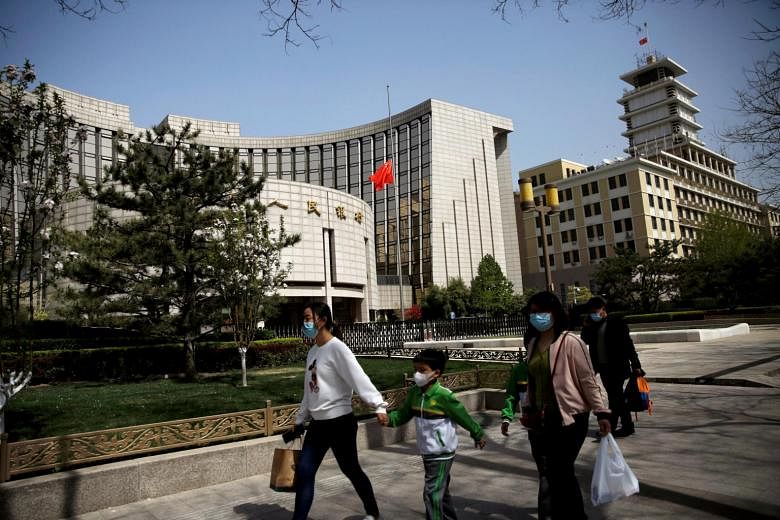BEIJING (BLOOMBERG) - China’s central bank cut its key interest rate for the first time in almost two years, bolstering an economy that is losing momentum in the face of repeated virus outbreaks.
A 10 basis-point reduction was announced on Monday (Jan 17) shortly before data showed that gross domestic product grew 4 per cent in the final quarter of 2021 from a year earlier, higher than the 3.3 per cent rise projected by economists but slower than in the previous three months.
Consumer spending took a notable dive in December as Beijing tightened virus controls in several parts of the country. An outbreak of Omicron variant cases in January, including in Beijing now, will further curb sentiment.
“Growth will continue to be weighed down by the property sector and, of course, the zero-Covid-19 policy that China is going to continue with,” Ms Sian Fenner, lead Asia economist at Oxford Economics, said in an interview on Bloomberg TV. “Retail sales numbers are still quite telling that the zero-Covid-19 policy is still wearing on consumers, and we haven’t seen the recovery that we’ve been seeing in the industrial sector.”
The economy was battered by repeated shocks in the latter half of last year: electricity shortages, defaults from a slow-moving housing and property crisis, and repeated Covid-19 outbreaks. The central bank stepped up its support on Monday by cutting policy interest rates and boosting liquidity.
For the full year, the world’s second-largest economy expanded 8.1 per cent, well above the government’s target of “over 6 per cent”. A surge in global trade helped, with data last week showing exports from China rose to a record US$3.36 trillion (S$4.5 trillion) in 2021.
The outlook for 2022 is still unclear, with global demand forecast to slow, the Omicron variant still spreading inside and outside the country, and no end in sight to the housing market crisis that began with China Evergrande Group.
Goldman Sachs economists have already cut this year’s growth forecast for China to 4.3 per cent due to the increased difficulty of containing the highly contagious virus variant.
Beijing has made economic “stability” a priority this year ahead of a meeting in the fall where President Xi Jinping is expected to be confirmed as leader again, suggesting the government will take more stimulus steps to spur growth.
The interest rate cut by the People’s Bank of China (PBOC) on Monday exceeded market expectations and puts it at odds with other major central banks like the Federal Reserve, which is preparing to hike interest rates.
The one-year medium-term lending facility (MLF) rate was lowered to 2.85 per cent from 2.95 per cent, and the seven-day reverse repurchase rate was reduced to 2.1 per cent from 2.2 per cent.
The PBOC also injected more liquidity by offering 700 billion yuan (S$148.7 billion) of MLF loans, exceeding the 500 billion yuan maturing, and added 100 billion yuan with seven-day reverse repurchase agreements, more than the 10 billion yuan due.
Chinese stocks rose following the rate cuts, with the benchmark CSI 300 Index up as much as 0.9 per cent after falling in the previous two days. The yield on 10-year sovereign bonds trimmed its drop to one basis point to 2.79 per cent as at 11.23am on Monday, after falling three basis points in response to the rate reductions.

